Designed by David B. Steinman, of Robinson & Steinman, New York City, the Waldo-Hancock suspension Bridge is a significant example of Steinman's work. David Steinman is considered among the most important suspension bridge designers of the 20th century. He earned an engineering degree from Columbia University in 1909 and went on to apprentice with Gustav Lindenthal, then at work on New York's Hell Gate Bridge. In the 1920's, Steinman emerged as an outstanding and innovative suspension bridge designer.
Civil
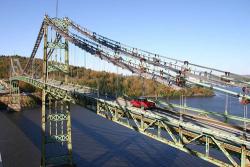
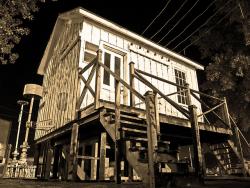
The plant began operation only twenty-six days after Thomas Edison's first steam plant began operating on Pearl Street in New York (NL 46). On September 30, 1882, an Edison "K" type dynamo produced electricity from a water-powered turbine to light three buildings (two paper mills and the H.J. Rogers home), at rate of about 12 1/2 kilowatts. It is the first Edison hydroelectric central station to serve a system of private and commercial customers in North America. The story of its development provides keen insight into the nation's first experiences with the electric light.
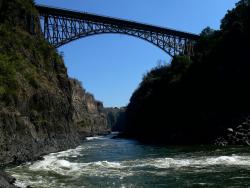
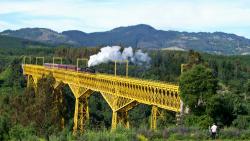
The bridge is 408 meters long and weighed approximately 1,500 metric tons when built. Originally supported by four columns, two more were added in later years to support the weight of heavier rail cars.
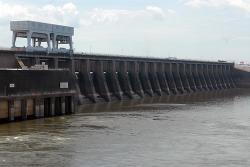
In 1930, the U.S. Corps of Engineers was directed to complete an engineering survey of the Tennessee River to determine the feasibility of establishing complete river navigability. The resulting report recommended a series of nine main river dams and several tributary dams to allow for a minimum eight foot channel (standard for barge navigation) from Knoxville to Paducah.
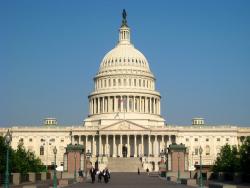
The United States Capitol is among the most symbolically important and architecturally impressive buildings in the nation. Construction of the original Capitol began in 1793, but it has been through several additions and alterations. Over its lifetime, the Capitol building has been built, burnt, rebuilt, extended, and restored.
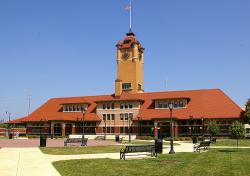
St. LouisState: MSCountry: USAWebsite: http://www.asce.org/Project/Union-Station/Creator: Link, Theodore , Pegram, George
In the early 1900s, Union Station was the hub of passenger railroad traffic in the central United States. It was one of the first stations to serve as a centralized terminal for multiple railroad lines. It originally served 22 rail lines; 13 from the east and nine from the west.
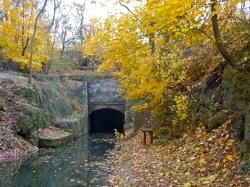
According to oral history, George Washington visited the canal diggings in 1792, and then again in 1794, while he was accompanying troops to suppress the Whiskey Rebellion in Western Pennsylvania.
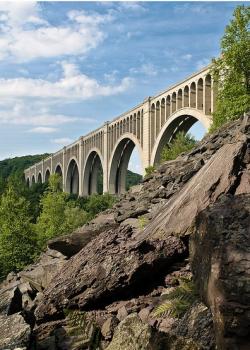
This majestic viaduct was built during the golden age of railroading. It was at the western end of a major readjustment in grade and alignment of the Erie-Lackawanna Railroad, and had double tracks to carry the trains across the valley of Tunkhannock Creek. The Hallstead cutoff (between Scranton, Pennsylvania and Hallstead, New Jersey) reduced passenger travel time by 20 minutes, and freight travel time by over an hour.
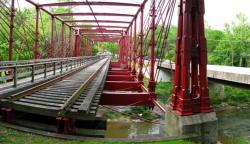
The design of the Bollman Truss Bridge-patented in 1852 and one of the first to use iron exclusively in all essential structural elements-was critical in the rapid expansion of American railroads in the 19th century. Replacing wooden bridges, which were cumbersome to build and vulnerable to decay, the Bollman Truss Bridge could be built relatively quickly and inexpensively, while providing the long-lasting qualities associated with metal. This allowed new rail lines to be built over long distances in a short period of time.
Innovations
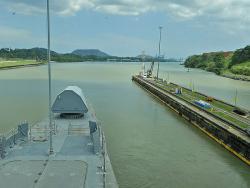
The United States became interested in a water route through the Panamanian isthmus in the mid-1850s, but it was the French who first attempted to build the Panama Canal. Led by Ferdinand de Lesseps, builder of the Suez Canal in Egypt, the French began the project in 1876. Conditions were brutal…
Read More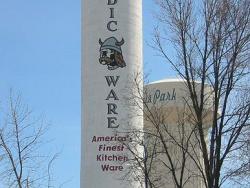
No image dominates the Midwestern landscape like the monolithic grain elevator, whose present shape and construction owe much to grain company operator Frank Peavy and architect-builder Charles Haglin.
Wanting to improve on the flammability and cost of traditional wood-cribbed…
Read More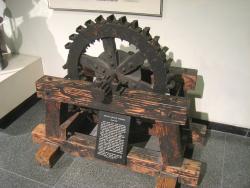
Water wheels have been used to power mills and pumps for centuries. However, the traditional water wheel was inefficient: water hitting a bucket would splash back against the next bucket, slowing the wheel. This is especially true when water is delivered to the buckets under very high pressure…
Read More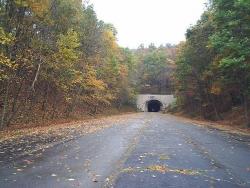
The Pennsylvania Turnpike was the first American paved highway of the automobile era in which tolls alone were expected to pay all project costs. The 160-mile roadway, which cut an east-west path from Pittsburgh to the state capital of Harrisburg, was considered a revolutionary example of…
Read More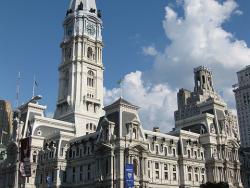
Philadelphia City Hall was the largest masonry load-bearing wall building in the world at the time of its completion in 1901, stood as the tallest occupied building in the United States until 1909, and still is the largest city hall in the United States. The building covers 14.26 acres,…
Read More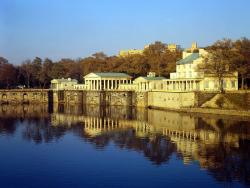
After an initial difficulty in attracting customers (who were used to getting their water from public pumps and private wells and cisterns), Philadelphia's waterworks soon couldn't keep up with demand. John Davis and Frederick Graff designed a complete remodeling of the system in 1811 so that it…
Read More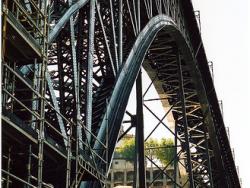
Built to cross one of the steepest valleys along the Douro River, the Ponte Maria Pia was the first major work to emerge from the French firm of Gustav Eiffel and Company, establishing Eiffel as an important bridge designer and civil engineer of his day. Resting on a parabolic arch spanning 160…
Read More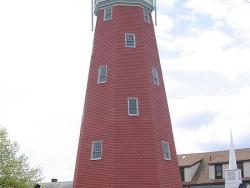
The Portland Observatory was built in 1807 by Captain Lemuel Moody to serve as a communication station for Portland Harbor. Portland Observatory was one of the earliest marine signal stations in the United States, and it is the last known to survive. The Observatory's location on Munjoy Hill…
Read More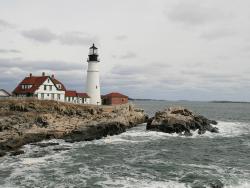
The Portland Head Light was the first lighthouse to be constructed in Maine and the first one completed and put into service by the Federal government under the Lighthouse Act of 1789, which moved to place all lighthouses under federal control. While work had begun on the lighthouse in 1787 by…
Read More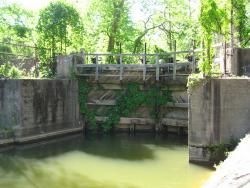
These canals and locks are a part of the first extensive system of canal and river navigation works undertaken in the United States. The idea for the canal was proposed by George Washington, when, as an engineer, surveyor and military emissary for Virginia, he saw the need for a trade route west…
Read More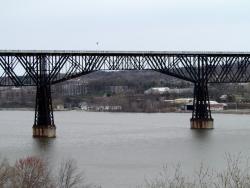
A bridge across the Hudson at or near Poughkeepsie was planned starting in the early 1870s to primarily carry coal from the coalfields of northeastern Pennsylvania to New England. At the time there were no bridges between Albany and New York Harbor. Horatio Allen, soon to be President of the…
Read More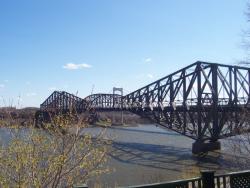
The bridge is immense, not only in length and weight but in width. At 67 feet wide, it can accommodate two sets of railway tracks, two sets of streetcar tracks and two roadways.
It took three tries and cost 89 lives, but the city of Quebec was determined to compete with provincial rival…
Read More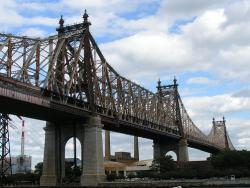
When opened in 1909, the Queensboro Bridge had the two longest steel cantilever spans in the world - 1,182 feet from Manhattan to Blackwell's Island and 984 feet from Blackwell's Island to Queens. These would remain the world's longest cantilever spans until the completion of the Quebec Bridge…
Read More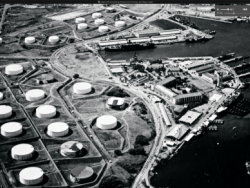
Conceived in the early years of World War II as a plan to bury four fuel containers horizontally in a hillside at the U.S. Navy facility at Pearl Harbor, Hawaii, the Red Hill Underground Fuel Storage Facility ultimately encompassed the design and construction of 20 vertical storage tanks - each…
Read More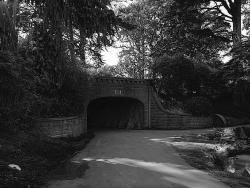
Alvord Lake Bridge, along with many of Ernest Ransome's reinforced concrete buildings, survived the 1906 San Francisco earthquake and several subsequent tremblers with no damage. Built in 1889 by Ernest L Ransome of New York, this reinforced concrete arch bridge in San Francisco's Golden Gate…
Read More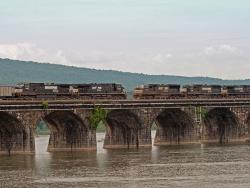
The third bridge built on the same site to carry railroad tracks across the Susquehanna River just north of Harrisburg, Pennsylvania, the Rockville Stone Arch Bridge, at 3,820 feet long and 52 feet wide, is believed to be the longest and widest stone-arch railroad bridge in the world. A central…
Read More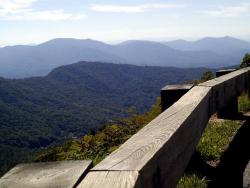
Designed to connect the Shenandoah National Park in Virginia and the Great Smokey Mountains National Park in North Carolina, the Blue Ridge Parkway was planned to provide pleasant motoring and to conserve and interpret the unique natural and cultural resources of the Southern Highlands. It was…
Read More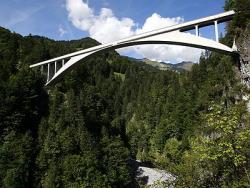
The Salginatobel Bridge, spanning the Salgina Valley ravine, is the earliest surviving three-hinged, hollow box arch bridge designed by Robert Maillart.
Maillart's 1901 invention of the concrete hollow box design became a major bridge building concept. In this design, the concrete arch…
Read More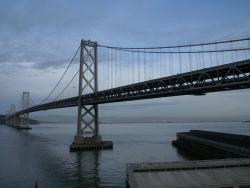
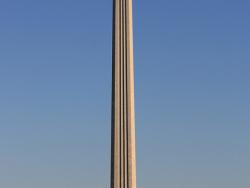
The San Jacinto Monument commemorates the decisive 1836 battle near the banks of the Buffalo Bayou and the San Jacinto River that allowed Texas to win independence from Mexico. It is the world's tallest monument, rising 15 feet higher than the Washington Monument.
In 1936, Daughters and…
Read More

